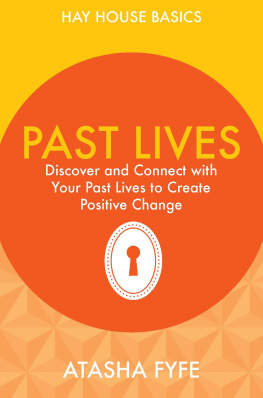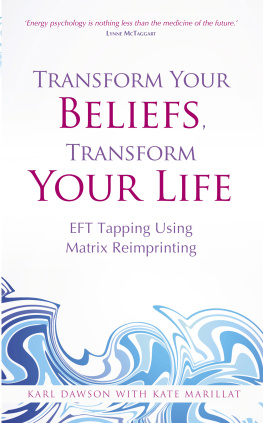Conversational Regression
An (H)NLP Approach to Reimprinting Memories
NLP Mastery Series
By
Jess Marion
Changing Mind Publishing
New York, NY
Changing Mind Publishing
New York, NY
Conversational Regression
NLP Mastery Series
Copyright 2016 Jess Marion and Changing Mind Publishing.
All rights reserved. No part of this book may be reproduced in any manner whatsoever without written permission except in the case of brief quotations embedded in critical articles and reviews.
For further information, please contact Changing Mind Publishing, 545 8th Avenue, Suite 930, New York, N.Y. 10018
Cover Design by Richie Williamson
Editing by Wendell Anderson
Contents
Chapter 1
Welcome to Reimprinting
As you begin this book, you are stepping through a portal that can transport you and your clients across space and time. What would it be like if you could change the past so that the present and future become greater than anything you could have expected before now? Reimprinting is a powerful NLP technique that allows your clients to do just thatto rewrite their own history in ways that will generate positive change throughout the rest of their lives. As you explore these pages, I ask that you hold one presupposition in mind. This one belief, which comes from John Overdurfs (H)NLP, will transform your client work. The presupposition is simple: Reality is a construction. We explore this in more depth in chapter 3. For now, feel comfortable in knowing that when you hold this belief, you have the ability to choose the reality you want for your own life, and it removes any limitations you may be tempted to put on a clients ability to succeed in the coaching or hypnosis session.
As you go forward through this book, you will see references to both hypnosis and coaching sessions. In my map of the world, they are the same. If you are doing a reimprinting, you are doing hypnosis because by its very nature, this pattern elicits trance and hypnotic phenomena. With that said, you may be coming from a strictly coaching perspective with no prior hypnosis training, and you can certainly rest assured that you will be able to use this pattern with ease. If you come from a formal hypnosis background, you will find the conversational nature of this technique fascinating. And it can certainly be adapted to a more traditional approach to hypnotherapy.
Thought Experiment
What would it be like if you were able to travel through time and change anything in the past that, when changed, would have a positive impact on you today? Carefully consider the events of your life. What if you could feel different about a memory? How much more empowering would it be for you to be free of any negative associations with that memory? It doesnt have to be anything bigit could be as small as letting go of some discomfort for the past. The interesting thing is small changes in the past can lead to profound transformations today.
Take a moment and make yourself comfortable. For this experiment, Im going to invite you to begin to play with the nature of memories. An easy way to do this is to begin by relaxing comfortably and taking a few comfortable breaths.
Now call to mind a memory that, when you think about it now, may cause some mild unease, and you would like to feel different about it. Choose a memory that has a noticeable negative feeling; not one, however, that is incredibly strong. While the pattern you are learning in this book is designed for big emotional states, this is just a thought experiment, so make it easy for you.
Once you have the memory and feel the emotion, step outside of it so that you could view it almost as though you were watching a movie. See yourself in it and anyone else who may have been there. Yet you, as the adult, can watch it in a dissociated manner. Make that movie small and place it down on the floor. Take a moment to notice how the feeling about that memory now changes with it small and on the floor.
As you see that younger self in that scene on the floor, if you could gift that self any emotional resource that would make a difference for you now, what would it be? Im not talking necessarily about a cognitive understanding but an emotion that would make a difference for that younger self in the scene. What is it like when you experience that emotion in the present? You may recall the last time and place that you felt that positive state and notice what its like to feel it in your body. Allow yourself to fully step into this positive emotion and really feel it from the inside out. You may notice that the emotion has a color, a temperature, or a movement. Become aware of any aspect of that state that helps to increase the good feelings.
Once you feel this state fully and completely, send it to the younger self in that scene on the floor. Everyone has a different way of doing this. Some people imagine the color of the emotion flowing from themselves into the memory; others imagine it as an energetic transfer. Whatever way your unconscious mind chooses to do this is just the right way.
Once that emotion has entered the memory and has helped the younger self, watch that memory play again, and notice how it is different now. Become aware of how it feels to see this memory play out now that that younger self has access to that positive state.
If you would like to play with this a bit more, choose another positive state that would make the difference for you now. Step into that emotion, and gift it to the younger self. You can do this with as many states as needed.
Consider also that if there were other people involved in that memory, they too were probably not at their most resourceful. You could run the same pattern, gifting them resourceful states that would make the difference for you now.
For example : Perhaps a parent needed more flexibility or a classmate more compassion.
Watch the memory play out again, and notice how it is different this time. If you are already to the point of feeling comfortable, and you feel its appropriate, you could step into the memory with a first-person view, getting to feel how things are different now.
When you are ready, allow the memory to drift back from where it came, knowing that you have the ability to change your feelings and the impact of memories in the present moment.
You may have noticed some very interesting changes in the emotions around this memory. Some people will notice that the emotional charge of the old memory has faded and theyre now comfortable with it. Others may become aware of a more neutral feeling towards the memory. Finally, others may feel a slight decrease in the emotions surrounding the memory. In any case, youve had an important experience of the nature of memory. Keep this in mind as you continue in this book.
Regression: A Brief History
Regression has long been an important part of hypnotherapeutic history. Over the years, a number of highly respected hypnotists have left their indelible marks on this technique. In this section, I present a brief and broad overview of some of the key figures in the history of hypnotic regression work.
Freudian Regressions
One of the earliest accounts of the use of hypnotic regression comes from Sigmund Freud in the late 19th century. Hypnosis was an important part of Freuds therapeutic practice early in his career. In one of his published papers, he presented the case study of a woman named Anna who was suffering from partial paralysis. Freud used hypnotic regression as the main tool in relieving her symptoms.
Despite a few case studies available, Freud had limited success with hypnosis as a whole and very quickly abandoned its practice in exchange for his psychoanalytical approach.
Although he abandoned formal hypnosis, Freud had developed a theory of the mind, which supposed the subconscious mind is the reservoir of our dreams, memories, and drives. Most of these things are repressed and kept out of conscious awareness. They can, however, manifest in psychological and physical issues.
Next page



![Raymond A. Moody Jr. - Coming Back - A Psychiatrist Explores Past-Life Journeys [fixed]](/uploads/posts/book/131649/thumbs/raymond-a-moody-jr-coming-back-a-psychiatrist.jpg)


